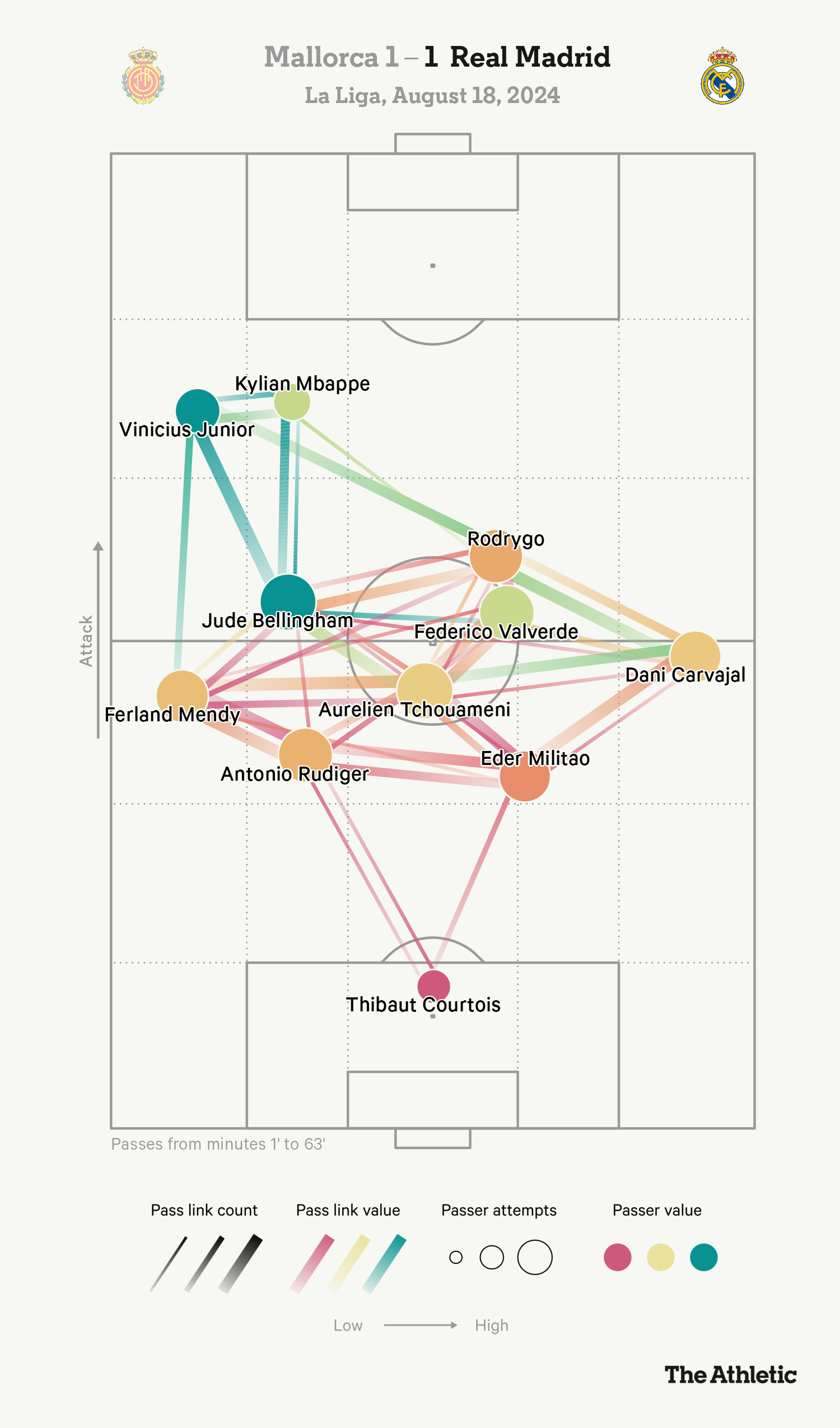
2024-08-20 00:30:02
Such is the sense of superstardom at Real Madrid these days — the aura that surrounds a glistening collection of the world’s best — there’s almost a mystique, untouchable and inscrutable, about the way that they approach the game.
Allow the dulcet tones of Jude Bellingham to shatter that illusion.
“You three,” he said in the tunnel at Mallorca on Sunday, gesturing towards Rodrygo, Vinicius Junior and Kylian Mbappe as if they were a group of unruly kids at the local park, “finish the attacks, because the running back is f***ing hard.”
It seemed a moment of light-hearted relief at the time. Madrid were 1-0 up in their opening game of the La Liga season, but Bellingham’s observation may point to an early structural issue with their new-look line-up.
Madrid ultimately had to settle for a point, and although Mallorca’s equaliser came from a set piece — a trademark header from powerful forward Vedat Muriqi — there were signs that a porous out-of-possession shape relied too heavily on the Englishman’s athleticism, as well as that of Federico Valverde on the other side of midfield.
Carlo Ancelotti is renowned for keeping star-studded squads in sync, but this latest iteration of Madrid’s Galactico era poses some balancing issues that might need a fix.
Let’s start with the positives. The flashes of attacking quality were frightening.
There were 83 passes exchanged between Bellingham and the front three in Madrid’s opening-day draw, with 51 of those in the attacking third and six leading to shots on goal. Many of those combinations came down the left, where Mbappe and Rodrygo took it in turns to drift over and form devastating triangles with Vinicius Jr to overload the full-back.
All in all, Madrid took 368 touches in the left third — almost 100 more than any other La Liga team so far on the opening matchday — and recorded the highest share of attacking touches (52.2 per cent) on that side too.
Their passing network from the game illustrates that lean to the left, as well as a clear 4-3-3 system with Aurelien Tchouameni at the base.

Although nominally Vinicius Jr’s side, the freedom that Ancelotti gives his attacking players saw a variety of combinations emerge down the left flank.
In the lead-up to the goal, for example, it is Mbappe who pulls wide to receive the ball out of defence, with Bellingham close by for support and Vinicius Jr occupying the central space.
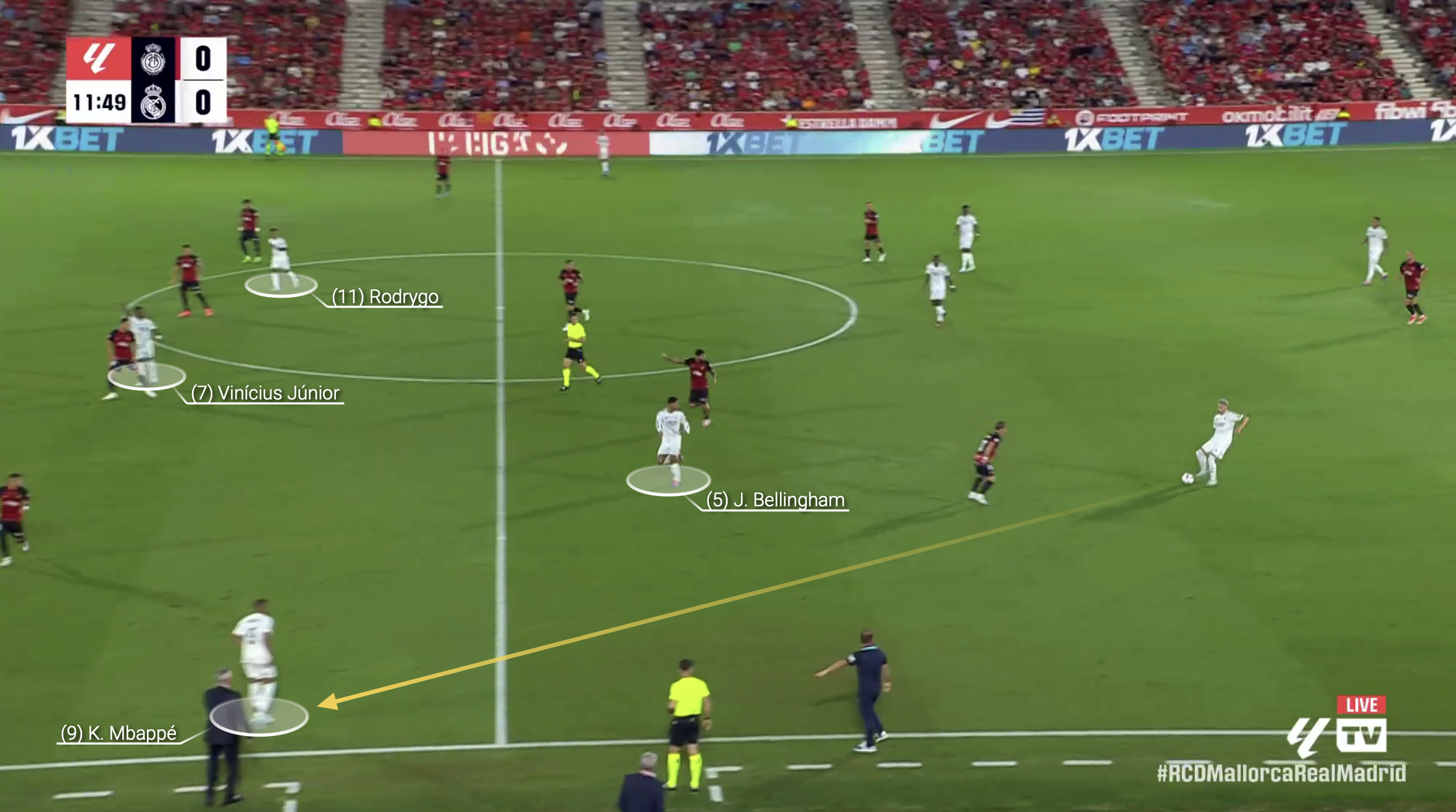
Bellingham thunders down the line on the overlap to take the full-back away from Mbappe and to create the two-vs-one, allowing the pair to exchange four passes to get into the penalty area. All the while, attacking reinforcements converge to load the left side of the box.
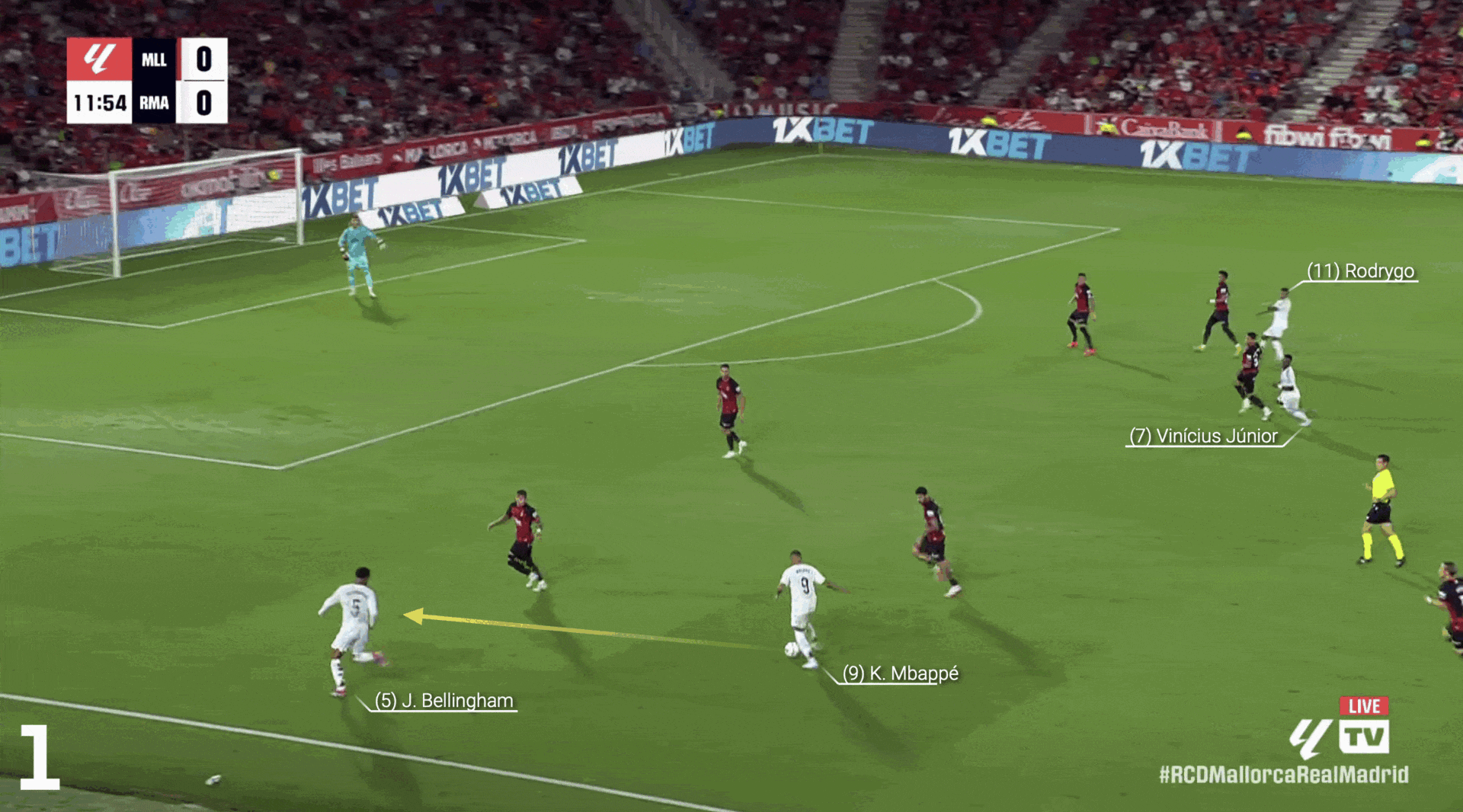
By the time Rodrygo receives the back-heeled pass from Vinicius Jr that allows him to cut inside and shoot, all four attacking players are within 10 metres of the ball, with Valverde also over on that side for support.

Such bunching is a feature of Ancelotti’s ideas, a so-called “relationist” approach that allows his most talented players plenty of creative freedom to follow their attacking instincts and combine quickly and efficiently in dangerous areas.
”The wing has to be occupied by one of the two,” the Italian summarised after the game, “but there is no particular plan.”
That flexibility was also on show in arguably the sharpest move of the game, this time down the right. It is illustrated in the images below.
As Antonio Rudiger lines up an inch-perfect switch of play, Bellingham has taken up a similar position but on the opposite side, while Mbappe has drifted over to get close to Rodrygo. Even right-back Dani Carvajal is in the attacking picture.
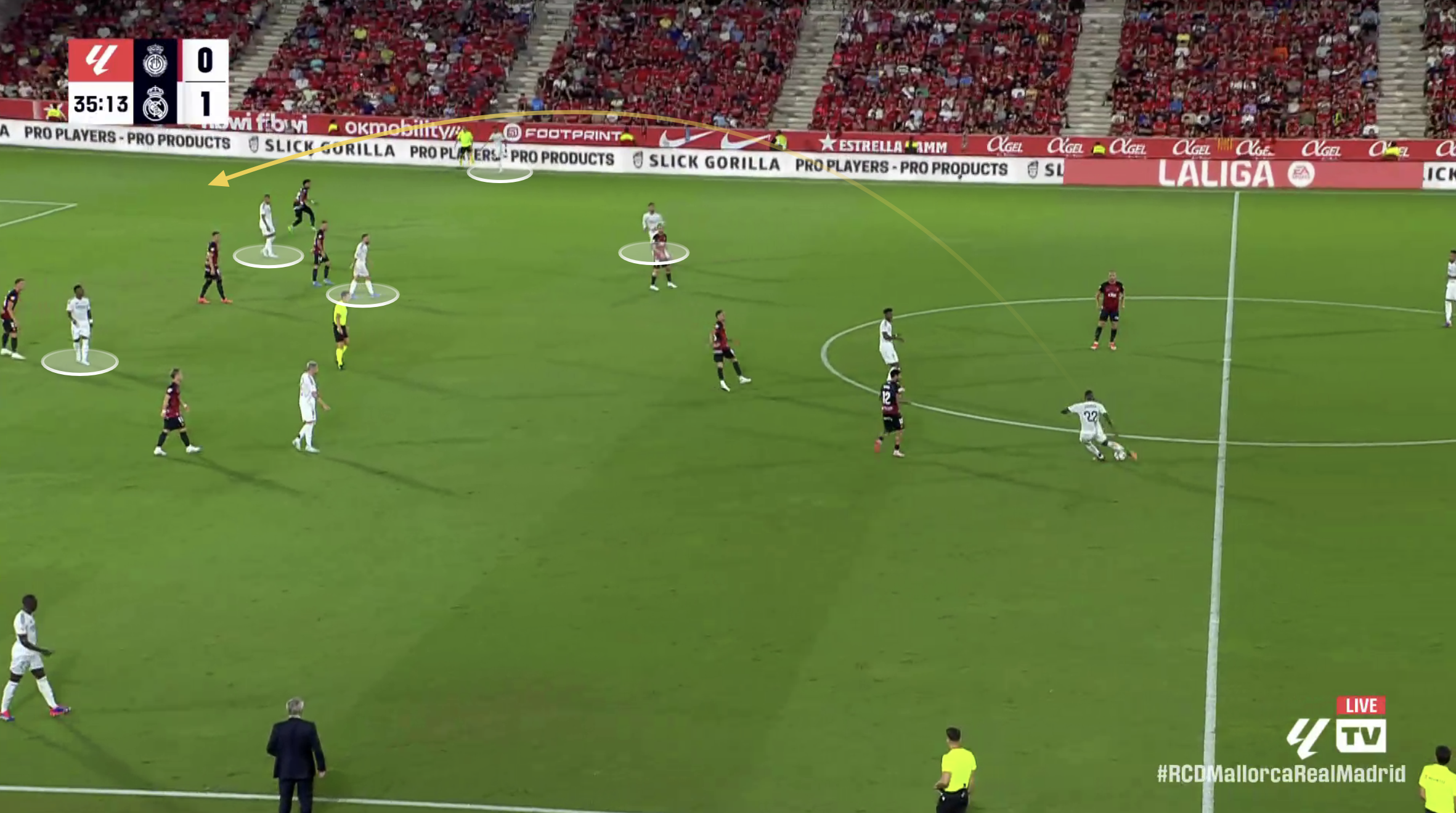
The quality of Rudiger’s ball gets the Mallorca defence backtracking, allowing Rodrygo to cut inside and attack the box.
What follows is a chain of flicks and tricks that passes through each of the front four, Rodrygo picking the ball up out the other side and playing in Valverde who had powered into the box unnoticed.
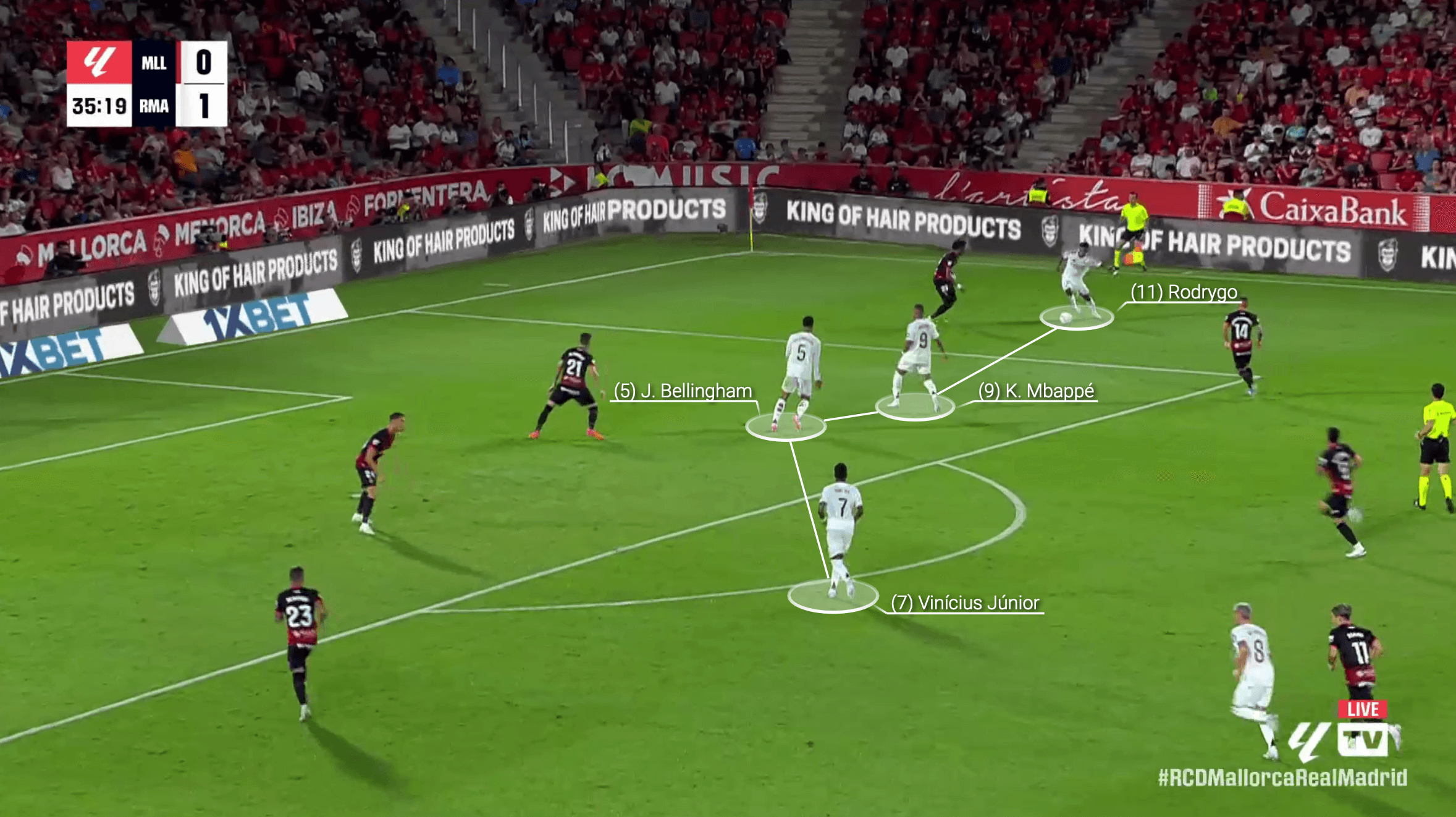
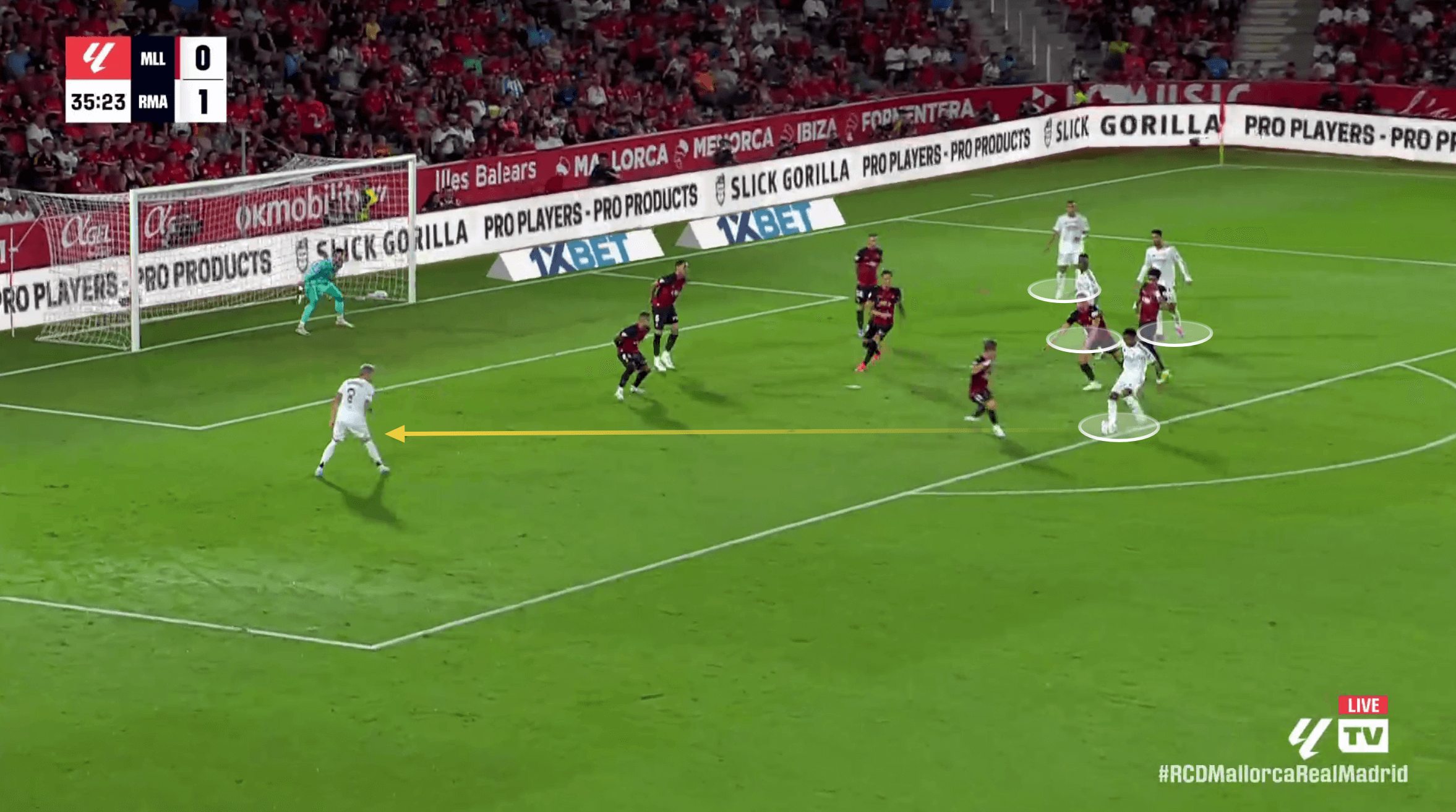
Particularly in the first half, the speed of the interplay and the technical precision allowed the visitors to move forward with purpose.
There were several instances of Mbappe’s defence-splitting running-power too, allowing Madrid to take the more direct option towards goal with the right ball.
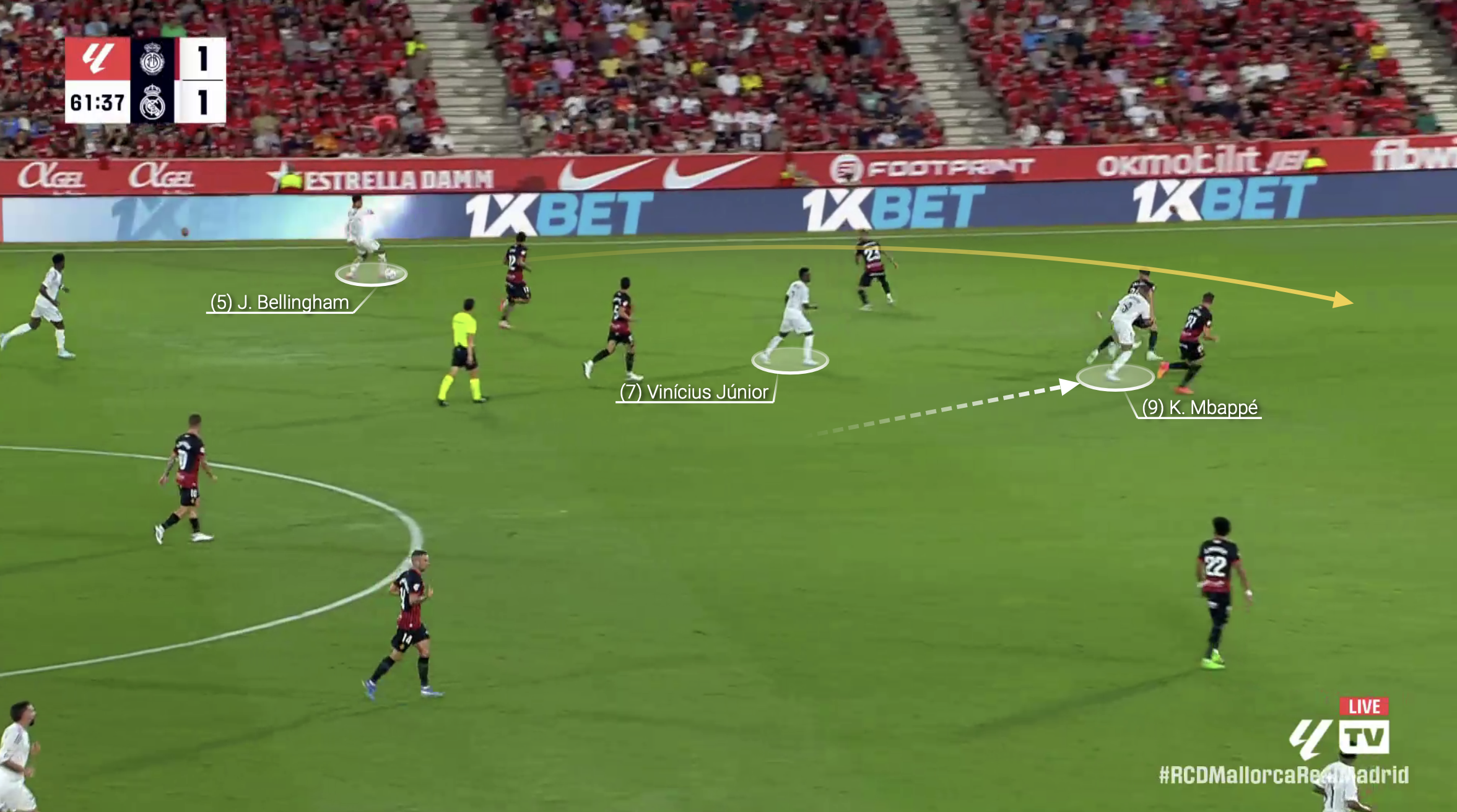
With more precision in the penalty area, it is not a stretch to imagine this fluid front four blowing most of La Liga away.
Such freedom came at a cost against Mallorca, however, as a three-man midfield often struggled to deal with the verticality and positivity of Jagoba Arrasate’s team, who were able to grow back into the game with just one goal in it. With Bellingham and Valverde pushing so high, it left them covering a lot of ground when they were hit the other way.
Madrid’s out-of-possession shape generally resembled a 4-4-2, with Bellingham defending the left side. As usual under Ancelotti, there was no aggressive high press with the opposition in settled possession — but the first line was broken easily on numerous occasions, compelling one of the midfielders to step up and apply pressure, as Valverde does below.
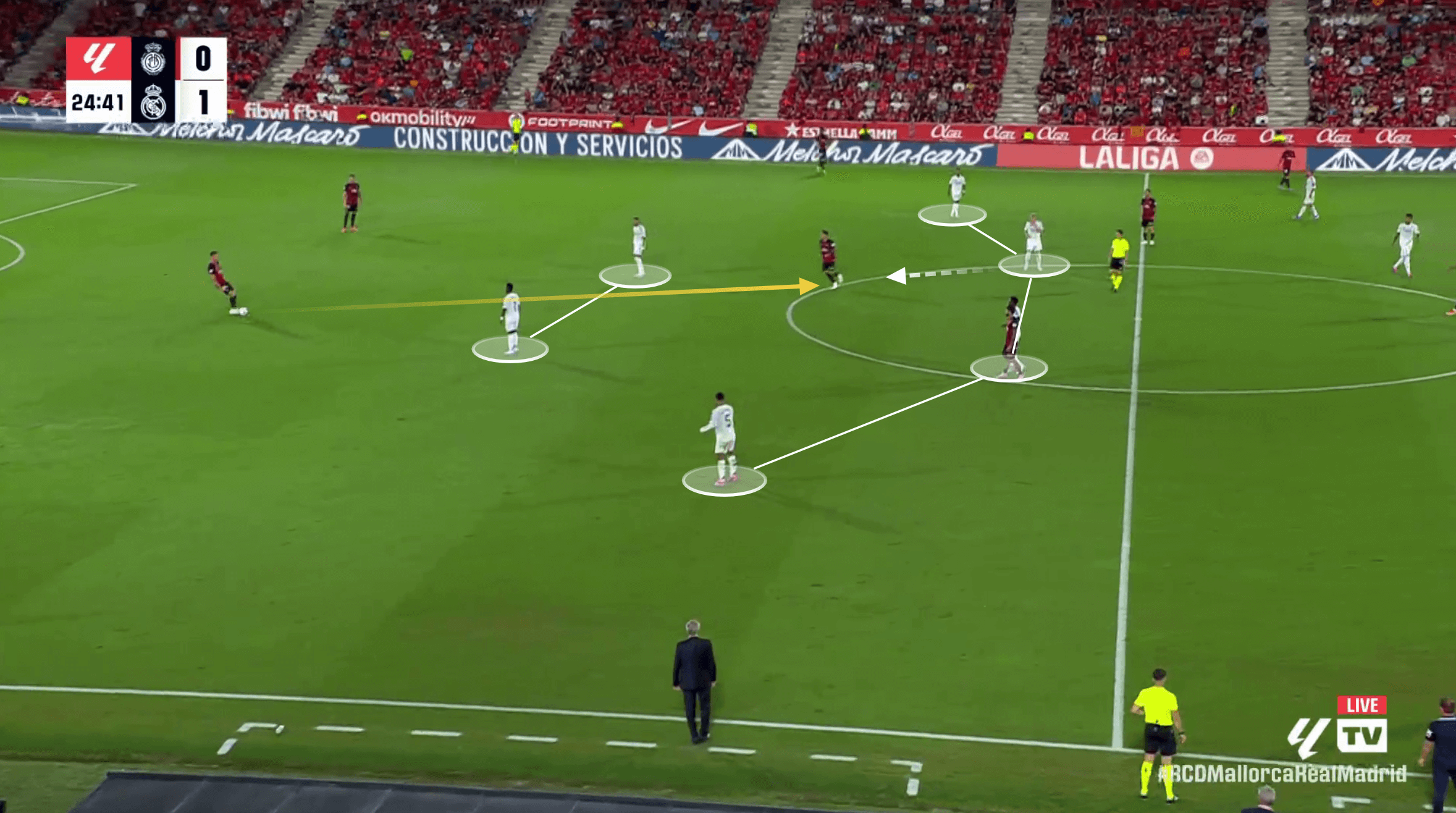
The move develops out wide, and Valverde then has to follow the run of Sergi Darder in behind. Mallorca go long and find their No 10, who controls the ball and cuts inside to find three team-mates charging forward.
Although Valverde has followed his man, his midfield partners are unable to assist in the middle, leaving a dangerous four-on-four situation that the hosts couldn’t exploit.
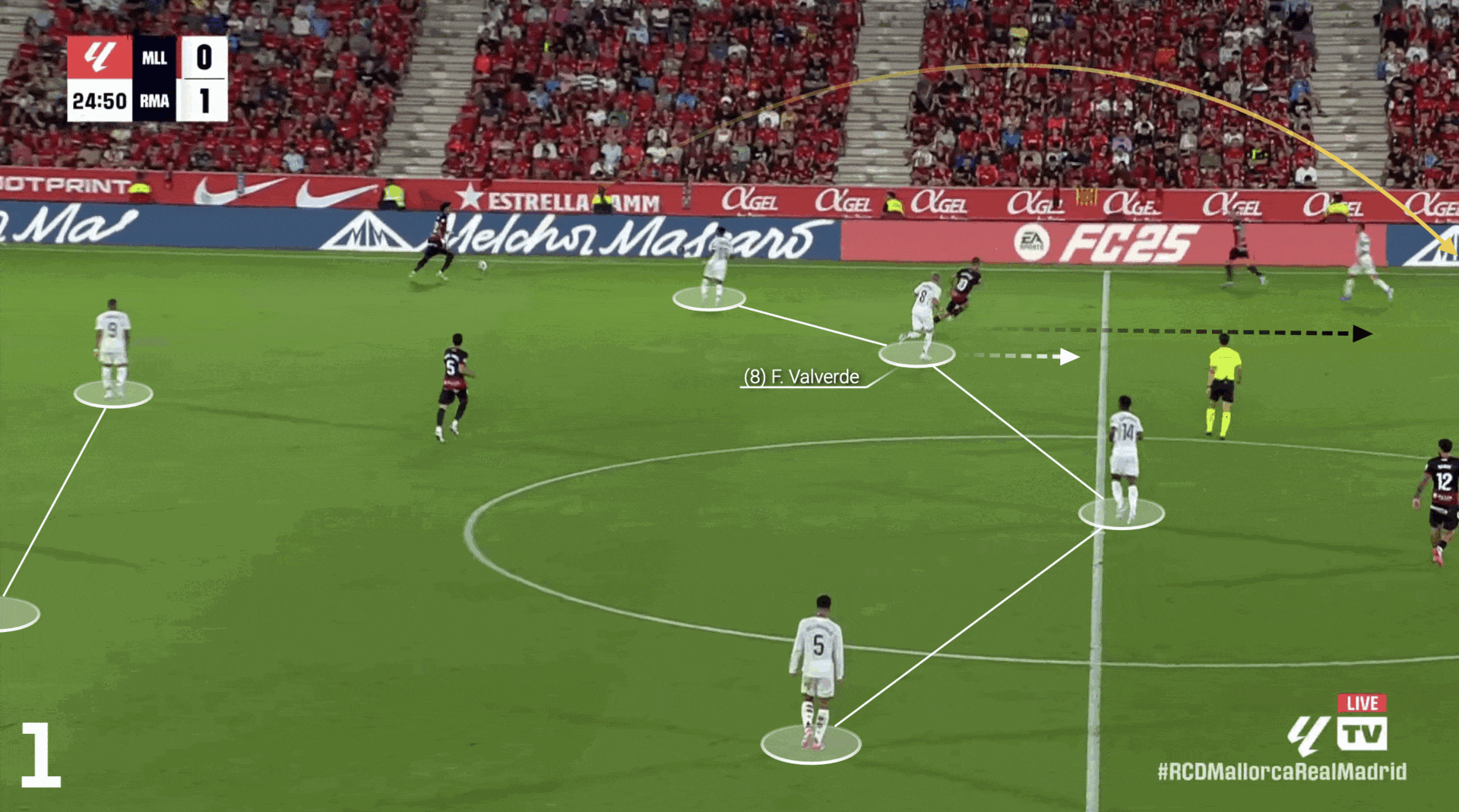
Things got slightly more alarming as the game went on and the midfield engines began to tire, particularly as a flurry of late attacks almost saw the hosts nick all three points.
Moments after Eder Militao made a crucial tackle to stop a dangerous counter, Mallorca were again able to break the first two lines easily, finding Manu Morlanes around the side of Madrid’s four-strong midfield.

The move advances down the line, and while the back four can poke the ball away after a low cross, it falls to three opposition players on the edge of the box, with the gap between midfield and defence again abundantly clear to see.
Antonio Sanchez scuffs his shot, before blazing over a similar opportunity two minutes later, as Ancelotti’s side were let off the hook.
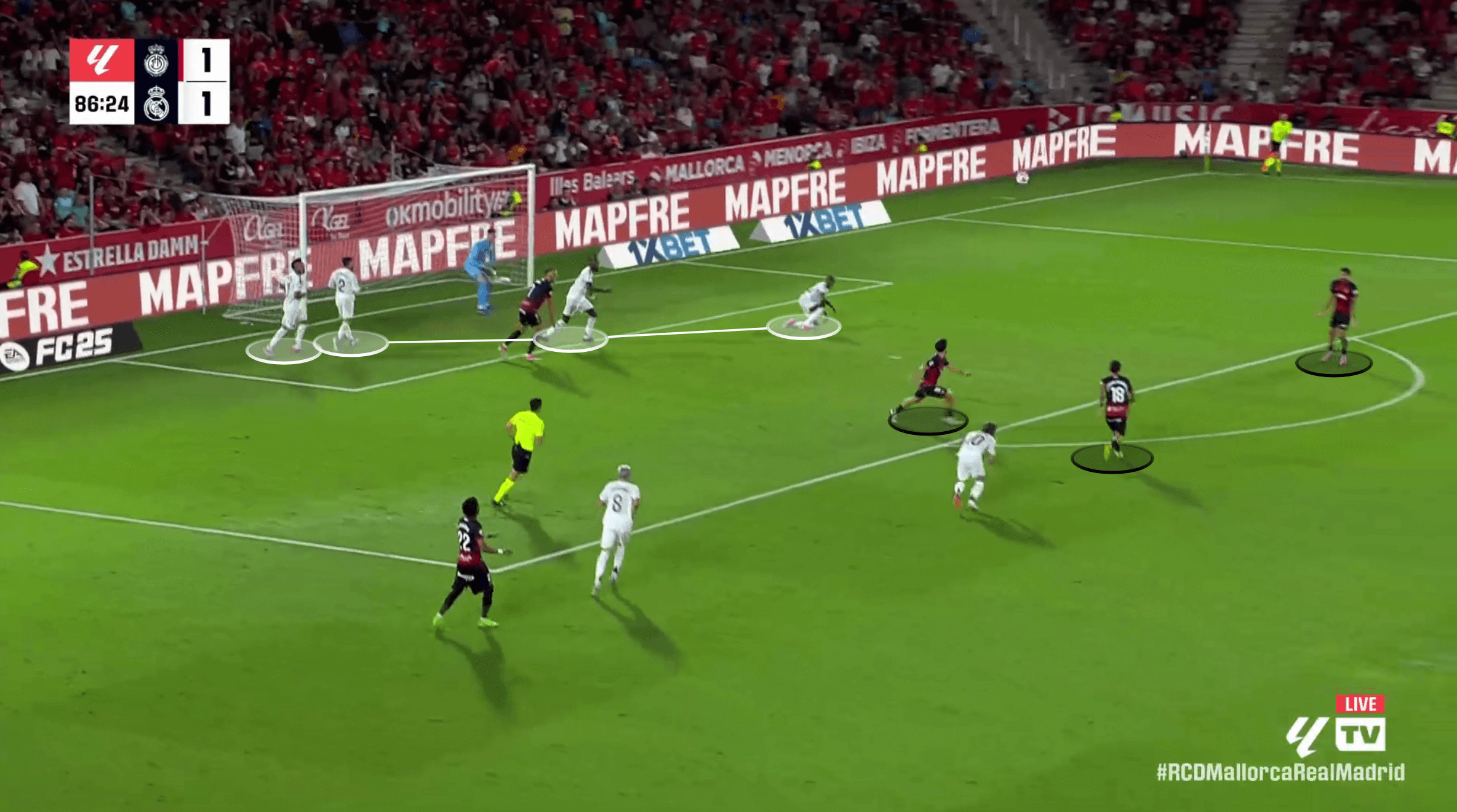
For large periods of the game, elite athleticism and physicality in the middle third were able to mask a loose defensive structure for Madrid, with midfielders back-tracking furiously and centre-backs stepping forward to plug the gaps.
By the end, however, Madrid had conceded four direct attacks — sequences starting in the opposition half and ending with a shot or a touch in the box. The last time they conceded more was at the end of the 2021-22 season, 78 La Liga games ago.
The attacking combinations were scintillating, but the back and forth, as alluded to by Bellingham, is unsustainable.
Trust the superstars to “finish the attacks”, or reinforce the midfield. It’s Ancelotti’s call.
(Top photo: Rico Brouwer/Soccrates/Getty Images)




